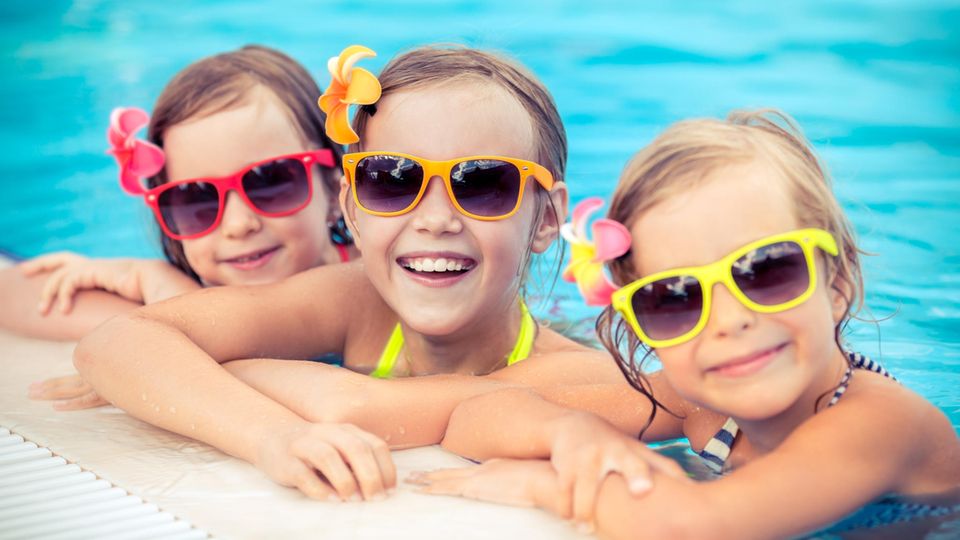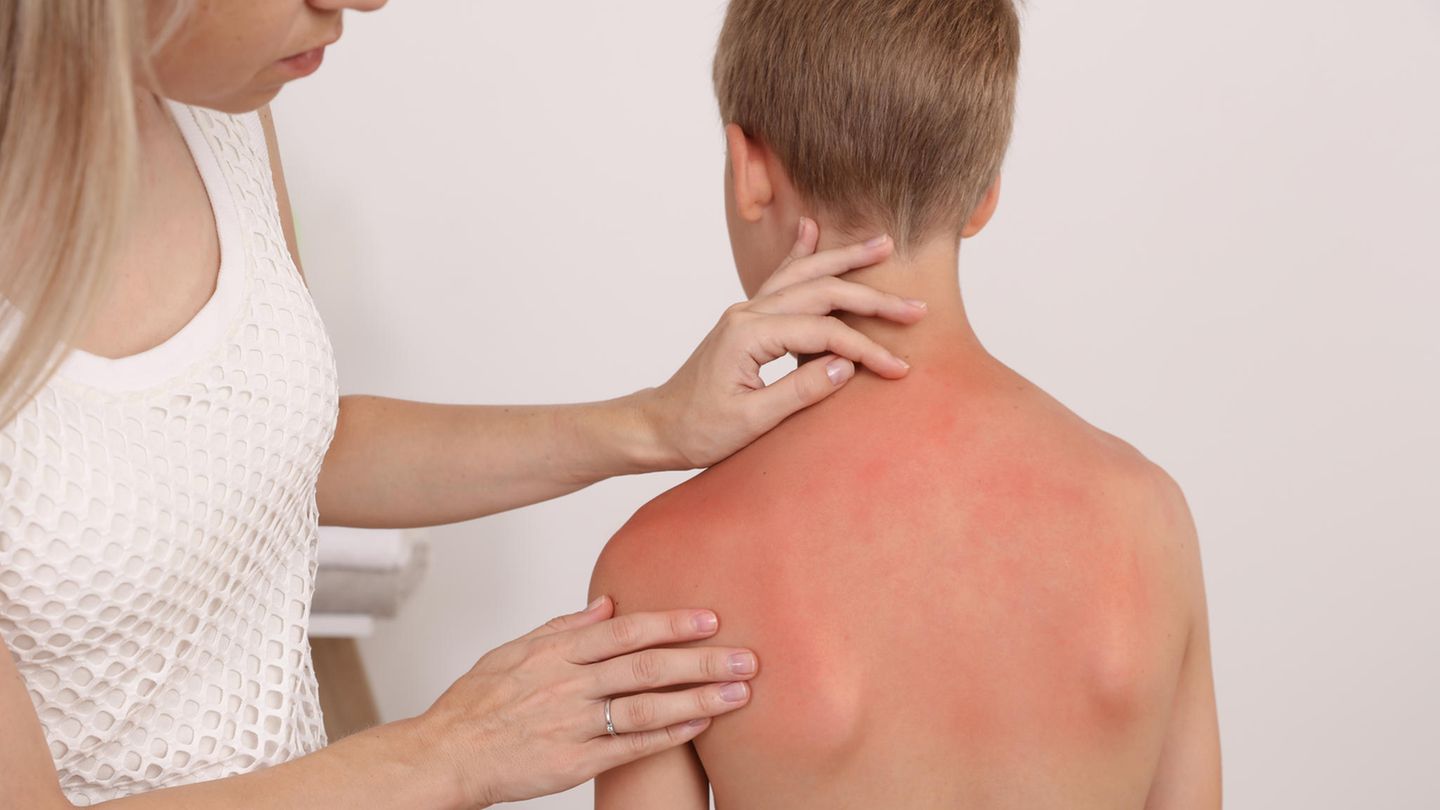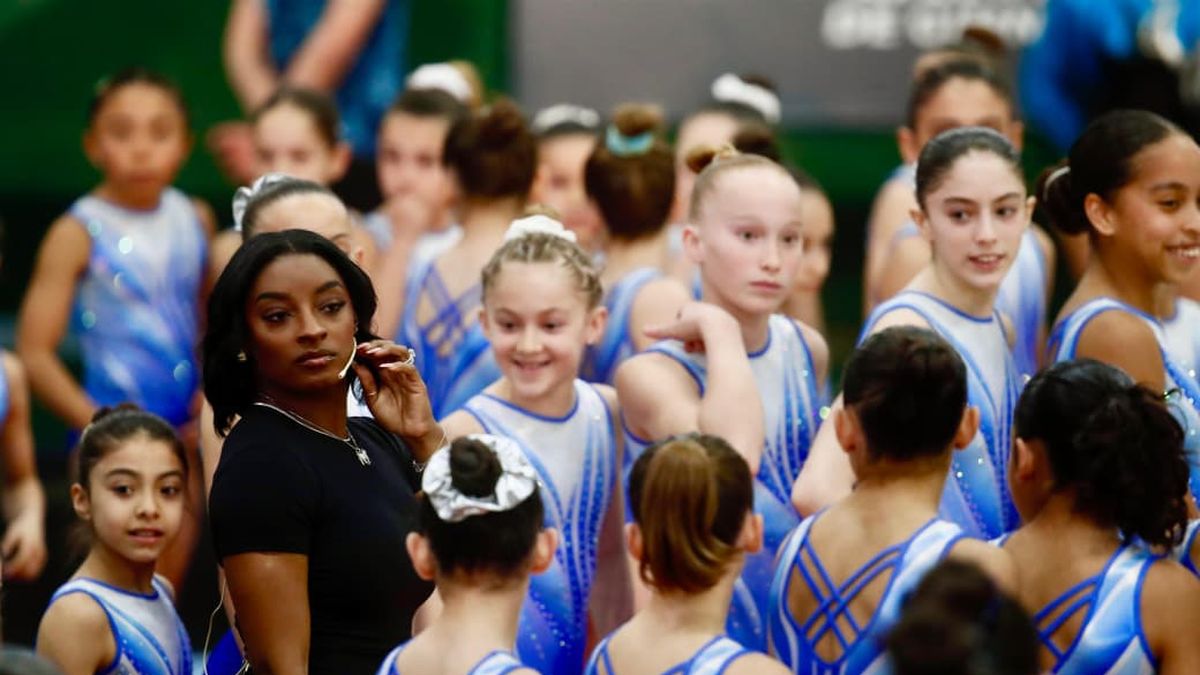Rash and itching
Treat the sun allergy in children in good time – you have to pay attention to this
Copy the current link
Add to the memorial list
The skin of children is particularly sensitive to light and can react irritated to too much UV radiation. How to recognize, treat and prevent the symptoms.
Basically, a “polymorphic light dermatosis” (PLD) in specialist circles is not a real allergy. Rather, the skin reacts under too much sun exposure: redness, swelling, squaddling, scales, stains or bubbles on the affected parts of the body (mostly in the face and on the shoulders) are the result. Similar to a strong sunburn, only that the skin does not “burn” through the radiation, but overreact as a result of the special sensitivity to light in the UVA area-i.e. the UV light spectrum, which does not necessarily lead to sunburn. In addition, the sun allergy is mainly triggered by external factors, such as a high -fat sunscreen. Both skin reactions mean that they can be very painful. It is all the more important to treat the symptoms quickly and effectively. How you can do the best and avoid sun allergy will be explained below.
Causes and symptoms
Since the sun allergy is an overreaction of the skin for too much lighting, the UV radiation is primarily to be named as the cause. The immune system reacts accordingly by triggering a kind of allergic reaction – and with it typical symptoms, which, however, can be different in each child. Hence the term “polymorph”, which means translated in a variety of ways. Here it is important to treat the affected parts of the body, such as cleavage, shoulders, neck, arms and legs. Even if the sun allergy is noticeable a few days later and the skin of your child shows one of the following symptoms:
- It starts to itch and / or burn
- She turns pink
- She gets reddish spots
- It forms bubbles
- She swells
First and foremost, they have to alleviate the itching, as children quickly run the risk of scratching themselves at the affected areas – and causing small skin injuries. As a result, pathogens have an easy game of penetrating the skin and causing inflammation. How to best treat the symptoms is explained in the next paragraph.
A notice: If the skin is red or swollen and your child also gets fever, you should see a doctor immediately! It uses antiseptic ointments.
How to treat the sun allergy in children
In the first instance, your child has to avoid the sun for a few days, then the symptoms usually decrease on their own. To alleviate the itching, you can cool the affected body regions with wet envelopes (the containers pull together due to the cold and the skin swells) or with something lubricate. If the skin is very irritated, you may also be a (only from six years old!) Or fenistile to contain the skin irritation. However, apply both very economical and only thinly on your child’s skin.
If you want to completely do without medical aids, you can rely on the following home remedies: chamomile or green tea, yoghurt or curd (never flour, powder or oil). You can paint the dairy products on a towel and wrap it around the skin for at least 30 minutes. If the cooling effect subsides, you can renew the envelope again. Also make sure that your child drinks enough. The sun is literally dry out by the sunburn and requires a lot of fluid.
A notice: If bubbles form on the skin, do not open it under any circumstances, otherwise it can be infected.
So you can prevent a sun allergy
Basically, it is best not to expose your baby to the sun in the first year of life – and if so, then only with an reconcilable sun protection. You can face the face with one Protect, the arms and legs with long, non -permeable clothing and the skin with a sunscreen. It is best to use one here (Ideally 50) and cream your child 30 minutes before the sun’s rays and after every contact with water so that she has enough time to take on. On the beach, a parasol with special UV protection helps that donates shadow and preserves the skin from strong radiation. For example, find a suitable model.
If your child already suffers from allergy, the chances are very high that it will suffer every year. In order to permanently alleviate the symptoms, it makes sense to get your child used to the exposure to light step by step. This works best by using the spring to expose your child’s skin to the sun – but only for a short period of time. Over time, they increase the stay outdoors, so that the skin can form more melanin (dyes or pigments) in order to protect themselves from dangerous UV radiation. You can support this process by taking it and . Talk to the pediatrician in advance.
Other preventive measures are:
- If you spend your vacation in the mountains, on the beach or in the snow, the radiation exposure is significantly stronger – even on cloudy days. So that your child does not get an allergic reaction, you should avoid the sun between 11 a.m. and 3 p.m. or prepare the skin with appropriate protection. If your child suffers from the so-called Mallorca acne, it is recommended to only use fat-free sunscreen.
- If the sun allergy is extremely strong, you can subject your child to phototherapy. Here, the skin is exposed to artificial UVA and UVB rays in order to get used to the sun’s rays. You need several sessions to increase the dose step by step. However, this therapy should only be carried out by a dermatologist, since large -scale skin burns are possible when used incorrectly!
Sunglasses with UV protection for children’s eyes

Not only the skin is particularly sensitive at a young age, but also the eyes. Therefore, a real UV protection in sunglasses and everyday glasses is essential. “Eye lens and cornea can filter a large part of the UV radiation. Additional protection is still important! That means: In the case of bad children, pay attention to glasses with certified UV protection,” explains Dr. Michael Petrak, specialist in ophthalmology at the University Hospital Bonn. Because even if there are no proven diseases on the eye that is clearly triggered by the UV radiation (as with skin cancer), Petrak still points out: “It is not excluded that an UV burden in childhood has an impact on eye disease in old age, such as the gray star or age-related macular degeneration (AMD).”
For this reason, this has been offering up to 400 nanometers in clear plastic glasses since 2018. The same protection should also offer sunglasses for children-you can recognize it from the correct labeling, the UV 400 label. You can find suitable models for boys and girls at every Zeiss optician as well as, for example .
*This article contains so-called affiliate links to products in online shops. If a user clicks on it and buys something, the publisher receives a commission from the dealer, not from the manufacturer. Of course, where and when you buy a product is up to you.
Source: Stern
I’m Caroline, a journalist and author for 24 Hours Worlds. I specialize in health-related news and stories, bringing real-world impact to readers across the globe. With my experience in journalism and writing in both print and online formats, I strive to provide reliable information that resonates with audiences from all walks of life.




